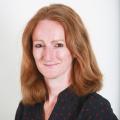
AN award-winning historian whose interest in the Middle Ages was inspired by childhood trips to Fountains Abbey has exposed a 1,300-year-old conspiracy theory perpetrated in the eighth century.
Former Ripon Grammar School student Dr Richard Sowerby, who lectures in medieval history at the University of Edinburgh, has discovered that a group of churchmen in Ripon sold a pack of lies to their fellow monks in order to gain power and influence.
The unsavoury plot, centred around a monastery that stood on the site of Ripon Cathedral long before it was built, has now been unveiled in Dr Sowerby’s original and exciting research -‘The Heirs of Bishop Wilfrid: Succession and Presumption in Early Anglo-Saxon England’.
The research has recently been published in the world-renowned English Historical Review and reveals how Monks gained power by making unsubstantiated claims about abbot St Wilfrid’s will.

The plot centres around a Middle Ages monastery that stood on the site of Ripon Cathedral long before it was built Picture: HEATHER MIDDLETON
Dr Sowerby explains: “It tells us quite a lot about the sort of underhand tactics that medieval churchmen resorted to in order to advance their own careers.
“There’s nothing new about ‘fake news’
“It’s about the very earliest recorded history of Ripon, in the late seventh and early eighth century.
“Ripon was at that time home to one of the richest monasteries in England, and the article looks at what happened to that monastery after the death of its most important abbot, St Wilfrid, in the year 710.”
The only bit of the monastery which still survives today is the crypt at the cathedral, which dates back to the eighth century.
Dr Sowerby, whose book Angels in Early Medieval England has received a number of distinguished prizes, was determined to uncover the story behind the 1300-year-old conspiracy when he smelt something fishy.
“The sources which were written at the monastery make various claims about the way that Wilfrid had supposedly nominated the individuals who were to take possession of his monasteries after his death,” said Dr Sowerby.

Dr Richard Sowerby
“Wilfrid was supposed to have made all the arrangements in the last few days before he died, and kept it all secret from his monks.
“But the story is a suspicious one: the sources say that the only people who could prove that Wilfrid had done this were the very same people who said that they had been nominated as his heirs.
“It’s a bit like someone turning up after the death of a relative and telling the rest of their family that everyone had been written out of the will, except for themselves.
“They got away with it; one of them became the abbot of Ripon, and another became bishop of Hexham, both on the basis of improbable stories that they told to justify their positions.”
Dr Sowerby said he hopes his research leads to historians to view sources and historical texts in a more questioning light.
He said: “My article is intended to get historians to use them more carefully, because actually these texts were deliberately written to mislead their readers in a number of ways.”



Comments: Our rules
We want our comments to be a lively and valuable part of our community - a place where readers can debate and engage with the most important local issues. The ability to comment on our stories is a privilege, not a right, however, and that privilege may be withdrawn if it is abused or misused.
Please report any comments that break our rules.
Read the rules hereLast Updated:
Report this comment Cancel